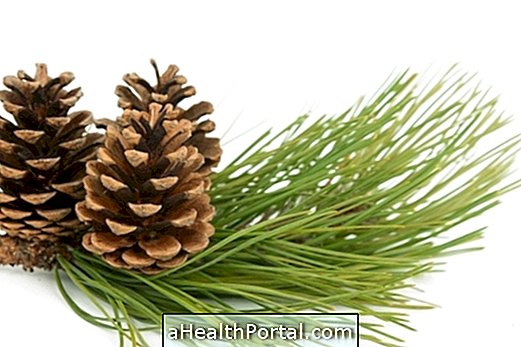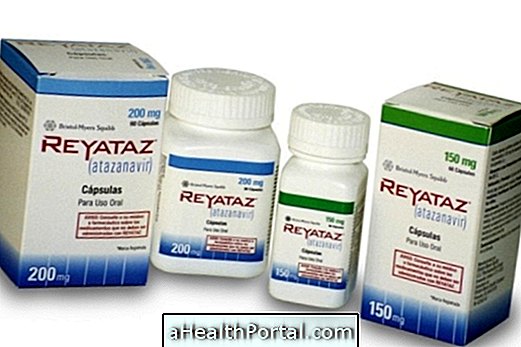Kefir is a fermented milk rich in probiotic bacteria that improves intestinal flora, helps immunity and improves intestinal transit, helping to maintain the general health of the body.
Kefir bacteria can be safely grown at home, and beverage production is easy and resembles the production of natural yogurt.
Being a probiotic food, the main benefits of kefir are:
- Decrease constipation, as good bacteria improve digestion and correct intestinal transit;
- Combat intestinal inflammations, as having healthy flora is the main factor to avoid diseases;
- Facilitate digestion ;
- To lose weight, because it is rich in proteins and has lower calories;
- Fight osteoporosis, being rich in calcium;
- Prevent and combat gastritis, especially the gastritis caused by H. pylori bacteria;
- Strengthen the immune system as it keeps the intestinal flora healthy, which prevents infection by microorganisms through the intestine.
In addition, kefir balances the intestinal flora and improves the absorption of nutrients, being great for those who have undergone antibiotic treatments and need to regulate the intestinal transit. See what probiotics are and what probiotics are for.

How to use Kefir to lose weight
Kefir is a low calorie food because 100 g has only 37 calories and is a good option to use in diets to lose weight. It can be used to replace milk or yogurt intake, making it an excellent choice for those with bowel movements.
You can consume once a day, for breakfast or a snack, for example. To make the taste more pleasant you can sweeten it with a little honey or add fruit like banana or strawberry in the form of vitamin.
Kefir helps to loosen the intestine and so when evacuating more regularly it is possible to notice that the belly becomes less swollen in the first week, since it improves digestion and fights constipation, but for lasting weight loss, if you follow a diet to lose weight and exercise regularly. See more recipes to end constipation.
Where to buy kefir
It is possible to buy kefir grains on internet sites, and kefir milk can be found in supermarkets or health food store, but donations between friends or on internet sites are very common because the grains are grown in liquid environment, multiplying, and a parcel must be removed to prevent overgrowth, so anyone who has at home usually offers to family and friends.
Kefir grains are also called Tibetan Mushrooms, Yogurt Plants, Yogurt Mushrooms, Yogurt Fungus, and Lotus of Snow. They originated in the Caucasus and are made up of different microorganisms that are good for regulating the intestine.

How to Make Kefir Milk
The preparation of kefir is very simple, similar to the homemade production of natural yoghurt.
Ingredients
- 100 g milk kefir
- 1 liter of cow's milk or goat's milk
Method of preparation
Put in a glass container the kefir grains, fresh milk, pasteurized or not, skimmed, semi-skimmed or whole. The contents are left at room temperature for about 24 hours. The fermented milk is strained to separate and recover the grains that are added to more fresh milk, repeating the process.
The already fermented liquid kefir that is cooked can be consumed immediately or can be kept in the refrigerator for later consumption.

How to Make Water Kefir
The water kefir is made using coconut water or mineral water add sugar, brown sugar or rapadura.
Ingredients
- 3-4 tablespoons water kefir grains
- 1 liter of water
- 1/4 cup sugar
Method of preparation
In a glass jar, put the water and sugar and dilute well. Add the kefir grains and cover the mouth of the jar with a paper towel, gauze or diaper, fastening with a rubber band to stay safe. Leave in a dark place at room temperature to ferment for 24 to 72 hours. The more you ferment, the less sweet the final drink will be. After fermentation, strain the grains to use them in an upcoming fermentation.

Flavoring water kefir
After fermentation, water kefir can be mixed with fruit juices, teas, ginger and dried or fresh or dried fruit to flavor. The fermentation causes the drink to be lightly carbonated, and it is possible to flavor to taste to create a homemade soda.
The water kefir lasts for 3 days 1 week in the refrigerator, and can be consumed in the snacks or as accompaniment of lunch or dinner. Another option of fermented drink to accompany meals and improve health is kombucha. See more about its benefits and how to do it.
How to Grow and Care for Kefir
To keep kefir always healthy and productive, it should always be stored in a container with milk or water with sugar after each fermentation, remembering not to use metal utensils and always to cover the container with a gauze or paper towel, so that it does not come in contact with flies or ants. On warmer days or to delay a fermentation process, you can store kefir in the refrigerator, but if you want to spend more days without using kefir for fermentation, the beans should be stored in a covered container and frozen.
Gradually, the kefir grows with the fermentations and creates a thicker goo or liquid, being necessary to wash the grains in water at least once a week. It is possible to store some of the grains in the freezer to always have a reserve, and the remaining remaining can be donated for other people to produce their kefir at home, noting that the kefir grains of milk must be separated from the water kefir grains.
Contraindications and side effects
Although there is no formal contraindication, fermentation of kefir leads to a small production of alcohol and therefore may be harmful for people with liver diseases. In addition, it is also contraindicated in cases of lactose intolerance and milk allergy, and it may be used as an alternative water kefir, which is made from water or coconut water with demerara or brown sugar instead of milk.
Excessive intake of kefir can also cause problems like abdominal pain and diarrhea.
























